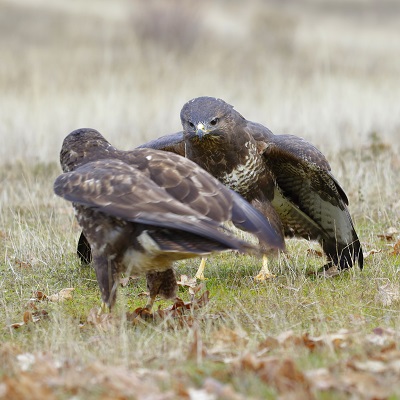Table of Contents
ToggleIntroduction
Ravens and hawks, two magnificent birds of prey, often capture our attention with their majestic flights and enigmatic behaviors. This article delves into the intriguing comparison between these remarkable creatures, unraveling their distinctive characteristics, behaviors, and ecological significance.
Raven Characteristics
Physical Features and Traits
Ravens are known for their large size, glossy black feathers, and wedge-shaped tails. They possess potent beaks and sharp claws, essential for their omnivorous diet.
Habitat and Range
These intelligent birds can be found across various continents, from North America to Eurasia. They adapt to diverse environments, thriving in deserts, forests, and urban areas.
Diet and Feeding Habits
Ravens are opportunistic feeders, consuming a wide range of food, including insects, small mammals, fruits, and even carrion. Their exceptional scavenging skills make them valuable to ecosystems as clean-up crew members.
Hawk Characteristics
Physical Features and Traits
Hawks, on the other hand, exhibit sharp beaks, powerful talons, and keen eyesight. Their plumage varies among species, a common feature being their hooked beaks.
Habitat and Range
Hawks have a global presence, inhabiting North and South America, Europe, Asia, and Africa regions. They are often associated with open spaces and are commonly seen soaring high in the sky.
Diet and Feeding Habits
As formidable predators, hawks primarily feed on other birds and small mammals. Their swift hunting skills and aerial acrobatics are awe-inspiring, making them top predators in their ecosystems.
Behavior and Intelligence
Raven’s Intelligence and Problem-Solving Abilities
Ravens are renowned for their high intelligence, often compared to apes and dolphins. They can solve complex puzzles, use tools, and plan for the future. Their problem-solving skills are truly exceptional.
Hawk’s Hunting and Predatory Behavior
Hawks are formidable hunters, relying on their keen eyesight to spot prey from great heights. Their strategy often involves stealth and surprise attacks, making them efficient predators.
Communication Skills
Raven’s Vocalizations and Communication
Ravens are incredibly vocal birds with a diverse range of calls and sounds. They use their vocalizations for social interaction, mate selection, and even to communicate danger.
Hawk’s Silent Hunting Strategies
In stark contrast, hawks are known for their silent approach while hunting. They communicate through non-vocal cues and body language, ensuring they remain unnoticed by their prey.
Cultural Significance
Legends and Myths Related to Ravens
Ravens have captured human imagination for centuries, appearing in countless myths and legends. They are often associated with wisdom, death, and mystery in various cultures.
Hawk Symbolism in Various Cultures
Hawks, too, hold a prominent place in human culture. They symbolize vision, power, and spirituality in many societies and are often associated with gods and deities.
Adaptations and Survival
Ravens and hawks have evolved unique characteristics that aid in their survival. Ravens’ intelligence and adaptability make them successful in various environments, while hawks’ specialized hunting skills ensure their place at the top of the food chain.
Ecological Role
Ravens play a crucial role in ecosystems by scavenging and reducing carrion, helping to maintain a cleaner environment. Hawks, as top predators, help regulate the populations of their prey, contributing to the balance of their respective ecosystems.
Interactions with Humans
Human encounters with ravens vary from reverence to superstition. Their intelligence has earned them a special place in folklore and scientific studies. On the other hand, hawks, often revered for their hunting prowess, are admired for their grace and agility in the sky.
Conclusion
In conclusion, ravens and hawks are remarkable birds with unique characteristics and behaviors. While ravens captivate us with their intelligence and vocal prowess, hawks awe us with their hunting skills and majestic flights. These birds enrich our natural world and hold a special place in human culture.
FAQs
- Are ravens and crows the same?
No, ravens and crows are not the same. While they belong to the same family, they have distinct physical characteristics, behaviors, and habitats.
- Do hawks migrate?
Many hawk species are migratory, traveling long distances during seasonal migrations in search of suitable feeding grounds.
- Can ravens mimic human speech?
Ravens are known for mimicking sounds, including some human speech. While their mimicry may not be as precise as parrots, it is still impressive.
- Are ravens and hawks endangered species?
Most raven and hawk species are not endangered. However, the conservation status of specific species may vary, and some are indeed threatened or endangered.
- How do ravens and hawks benefit the environment?
Ravens contribute to ecosystem health by scavenging carrion, which helps prevent the spread of disease. Hawks help control prey populations, maintaining ecological balance.





